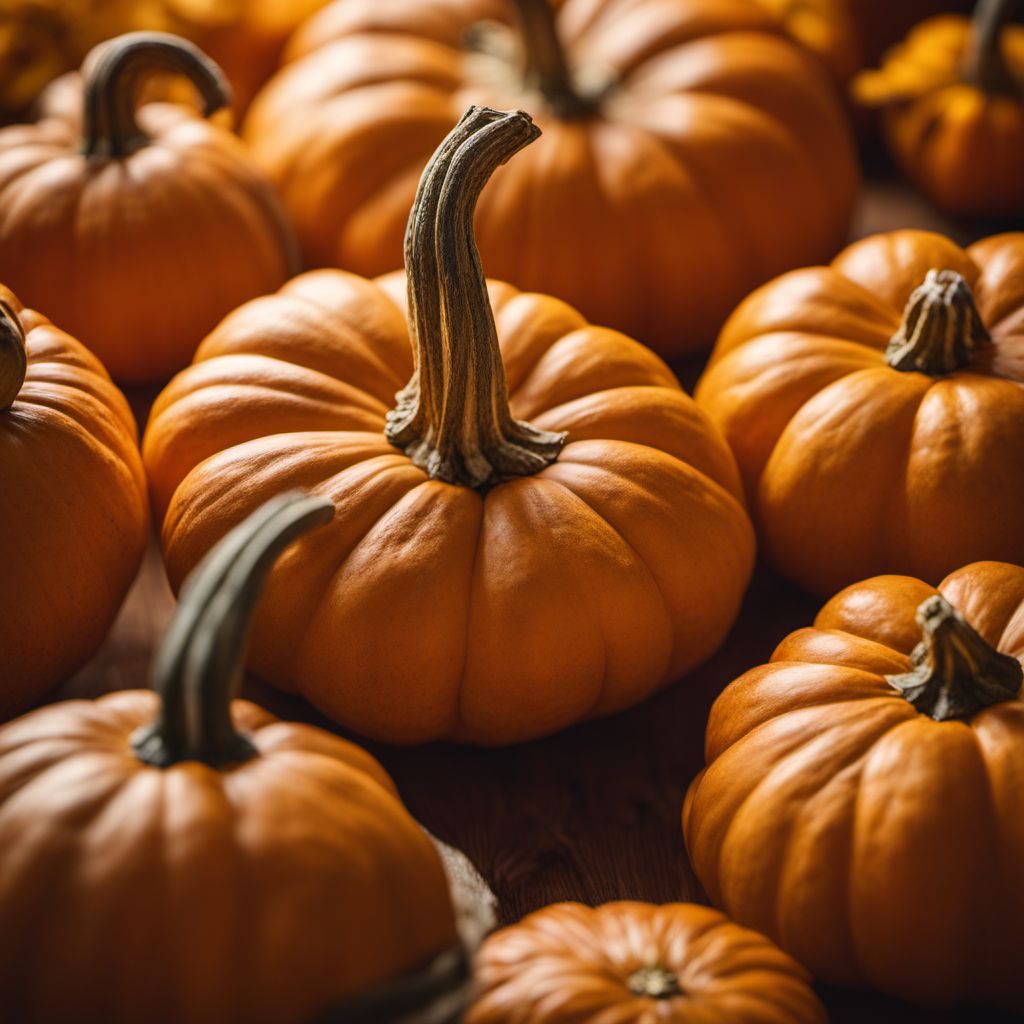
Ingredient
Pumpkins and similar-
The Versatile Gourd
Pumpkins and similar gourds are characterized by their vibrant orange color, firm yet tender flesh, and slightly sweet flavor. They have a smooth, ribbed skin and a hollow center filled with seeds. These gourds can range in size from small to large, with a variety of shapes and textures.
Origins and history
Pumpkins and similar gourds have a rich history dating back thousands of years, originating in Central America. They were cultivated by ancient civilizations such as the Mayans and Aztecs, who used them for both culinary and medicinal purposes. Pumpkins were later introduced to Europe by explorers and became popular in various cuisines around the world.
Nutritional information
Pumpkins and similar gourds are low in calories and fat, while being rich in essential nutrients such as vitamin A, vitamin C, and potassium. They also provide dietary fiber and antioxidants, promoting overall health and well-being.
Allergens
Pumpkins and similar gourds are not commonly associated with allergens, making them suitable for most individuals.
How to select
When selecting pumpkins and similar gourds, look for ones that are firm, heavy for their size, and free from any soft spots or blemishes. The skin should be smooth and evenly colored, without any signs of mold or decay. Additionally, choose gourds with a sturdy stem, as it indicates freshness.
Storage recommendations
To maintain the freshness of pumpkins and similar gourds, store them in a cool, dry place away from direct sunlight. Whole gourds can be stored for several weeks to months, while cut or cooked gourds should be refrigerated and consumed within a few days.
How to produce
Pumpkins and similar gourds can be grown in home gardens or purchased from local farmers markets. They require well-drained soil, ample sunlight, and regular watering. With proper care and attention, they can be successfully cultivated by amateur gardeners.
Preparation tips
Pumpkins and similar gourds can be prepared in various ways, including roasting, steaming, baking, or pureeing. They are commonly used in soups, stews, pies, and desserts. To enhance their flavor, try adding spices such as cinnamon, nutmeg, or ginger. The seeds can also be roasted and enjoyed as a nutritious snack.
Substitutions
Butternut squash can be used as a substitute for pumpkins and similar gourds, as they share a similar taste and texture. Acorn squash or sweet potatoes can also be used as alternatives in certain recipes.
Culinary uses
Pumpkins and similar gourds are widely used in both sweet and savory dishes. They are commonly incorporated into pumpkin pies, pumpkin soups, roasted vegetable medleys, curries, and risottos. They are also popular during festive seasons, such as Halloween and Thanksgiving, where they are carved into jack-o'-lanterns or used as decorative centerpieces.
Availability
Pumpkins and similar gourds are commonly available in North America, Europe, and parts of Asia. They are cultivated in countries such as the United States, Mexico, India, China, and Italy.
